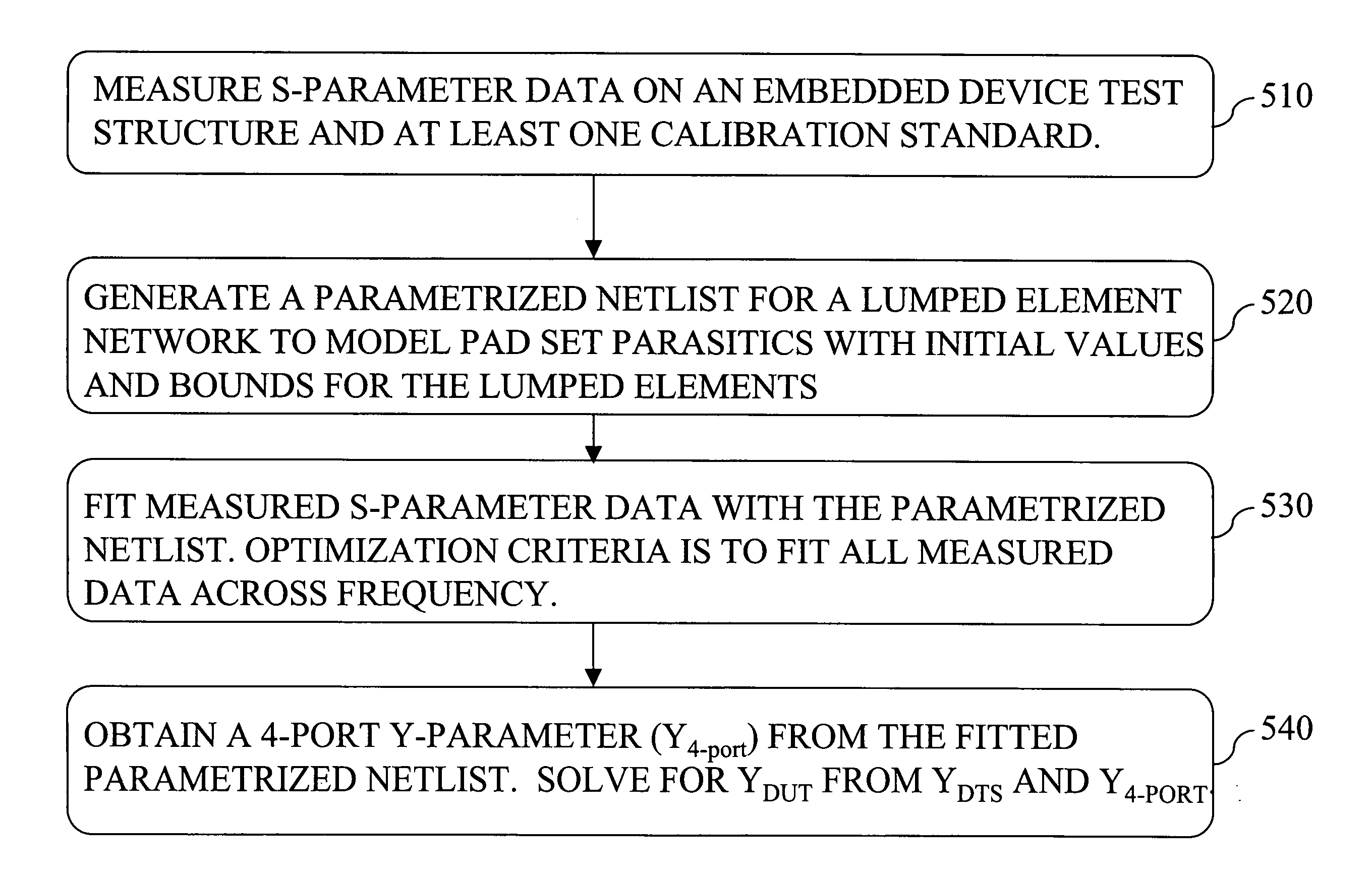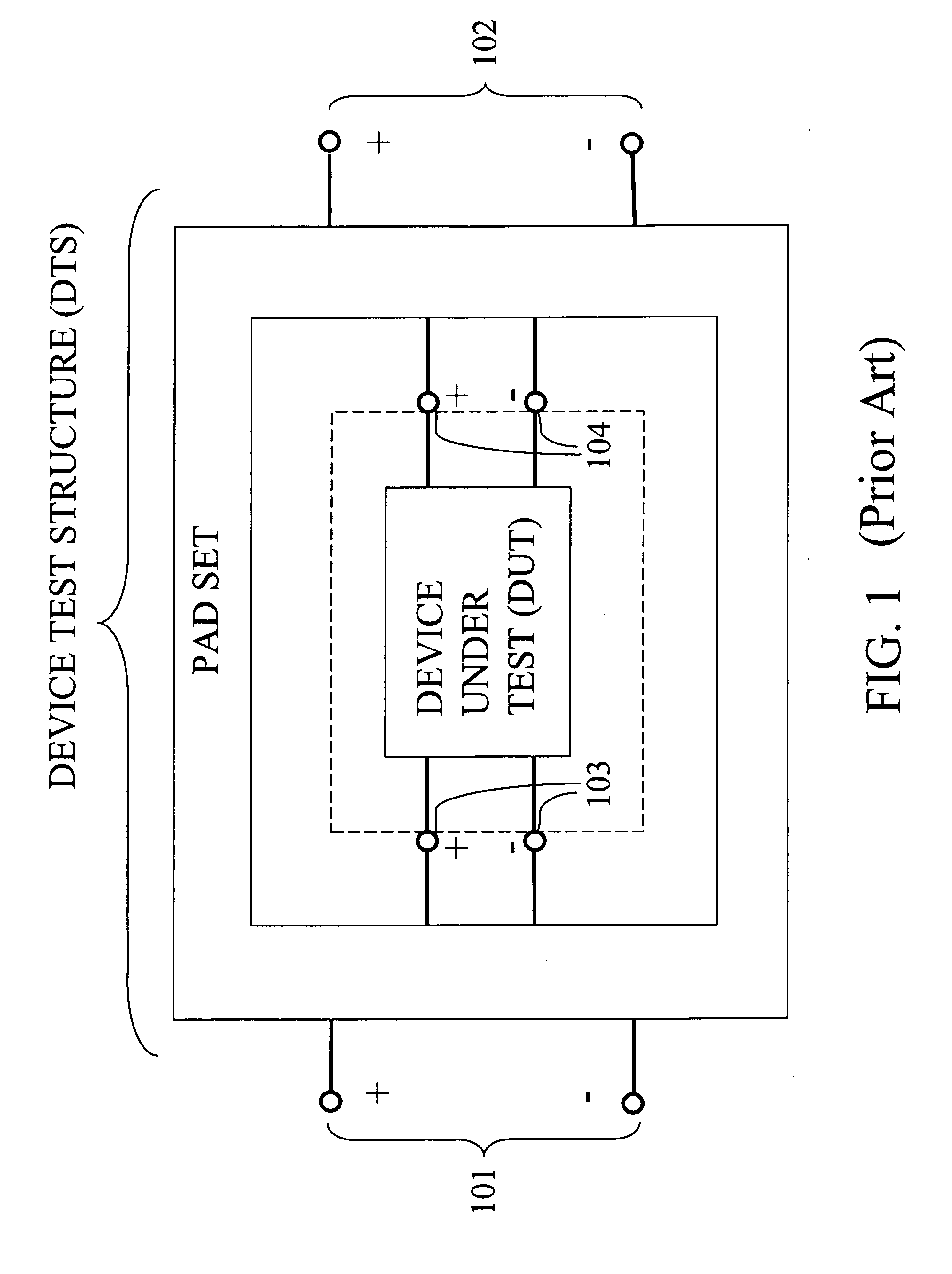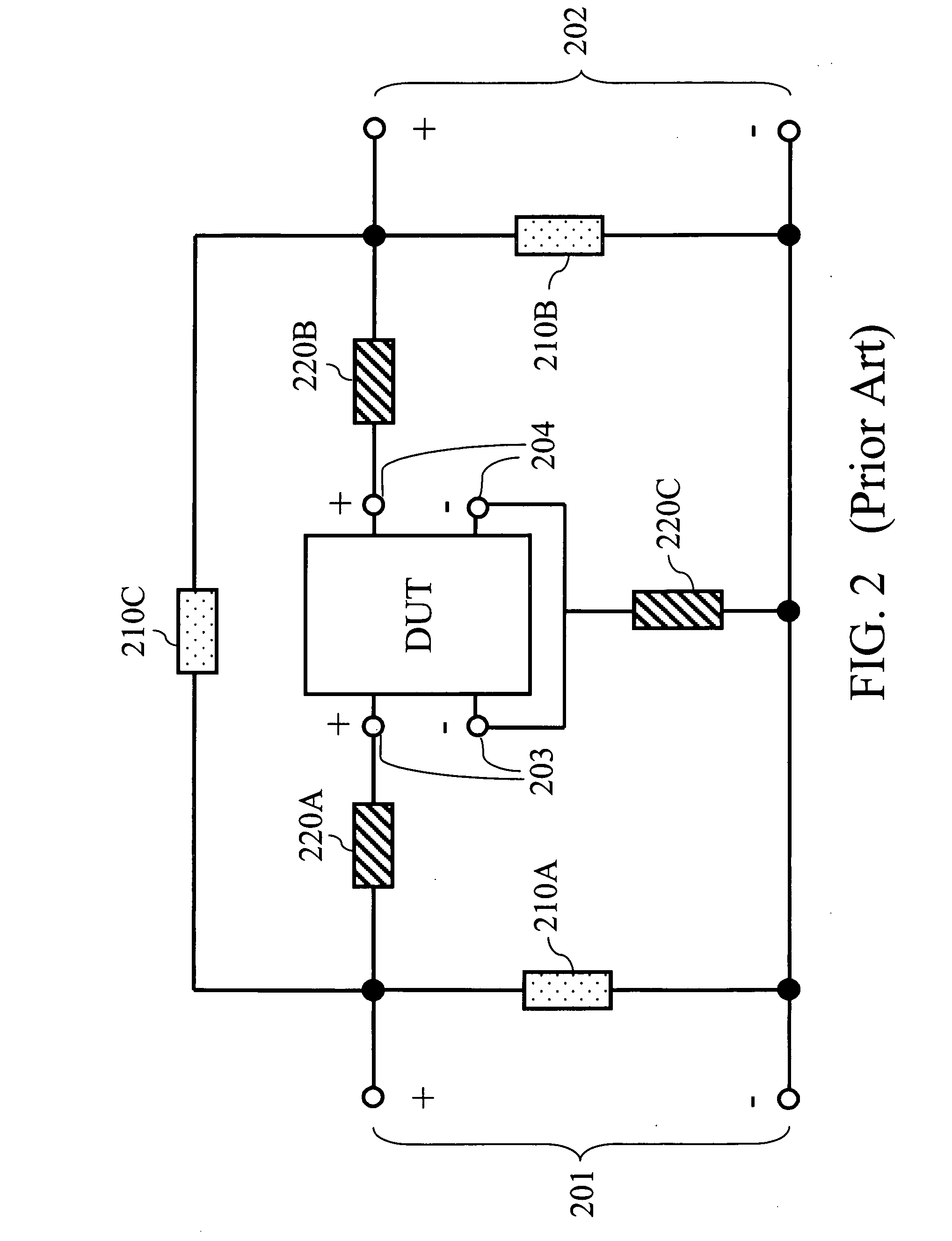System and method for de-embedding a device under test employing a parametrized netlist
a netlist and device technology, applied in the direction of resistance/reactance/impedence, speed/acceleration/shock measurement, instruments, etc., can solve the problems of significant errors, 4-port network and dut unknown, and pad set introduce significant parasitic effects at high measurement frequency
- Summary
- Abstract
- Description
- Claims
- Application Information
AI Technical Summary
Benefits of technology
Problems solved by technology
Method used
Image
Examples
first embodiment
[0088]Referring to FIG. 5, a flow chart illustrating a method for extracting pad set parasitics from a device test structure (DTS) according to the present invention is shown. The DTS embeds a device under test (DUT) and contains a pad set having pad set parasitics that may be modeled with a lumped element model having at least one parameterized lumped element as described above.
[0089]Referring to step 510, scattering parameter (S-parameter) data is measured on the DTS that embeds the DUT. Further, scattering parameter data is also measured on at least one calibration standard, which includes at least one of an open dummy, a short dummy, and a thru dummy. Preferably, the at least one calibration standard includes the open dummy and the short dummy. The S-parameter measurements on the DTS and the at least one calibration standard are performed at multiple frequencies employing a test equipment such as a vector network analyzer (VNA). The measurement frequencies may be at or above 1 G...
second embodiment
[0149]FIG. 6 is a flow chart illustrating a method for extracting a device parameter of a device under test (DUT) embedded in a device test structure (DTS) according to the present invention. Referring to step 610, scattering parameter (S-parameter) data is measured on the DTS that embeds the DUT and on at least one calibration standard as in step 510 of the flow chart in FIG. 5. Preferably, the at least one calibration standard includes the open dummy and the short dummy.
[0150]Referring to step 620, a parametrized netlist containing a lumped element network for the pad set parasitics of the DTS and representing the pad set parasitics of the DTS is generated as in step 520 of FIG. 5, i.e., the parametrized netlist is the same as in the first embodiment of the present invention described above. The parametrized netlist contains a first lumped element network that models the pad set parasitics of the DTS with at least one first parametrized lumped element. The first lumped element net...
PUM
 Login to View More
Login to View More Abstract
Description
Claims
Application Information
 Login to View More
Login to View More - R&D
- Intellectual Property
- Life Sciences
- Materials
- Tech Scout
- Unparalleled Data Quality
- Higher Quality Content
- 60% Fewer Hallucinations
Browse by: Latest US Patents, China's latest patents, Technical Efficacy Thesaurus, Application Domain, Technology Topic, Popular Technical Reports.
© 2025 PatSnap. All rights reserved.Legal|Privacy policy|Modern Slavery Act Transparency Statement|Sitemap|About US| Contact US: help@patsnap.com



